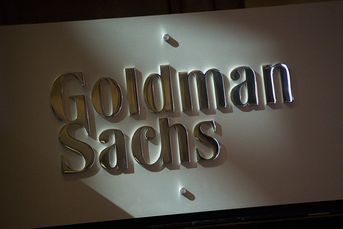NOURIEL ROUBINI
Nouriel Roubini, one of the biggest bears on Wall Street, wasn't surprised by the fire sale at The Bear Stearns Cos Inc. of New York. He said it just reinforces his 12-point gloom-and-doom outlook, which he unleashed on Wall Street in February, and he now thinks that total financial losses in the credit debacle may top the $1 trillion he previously projected.
Nouriel Roubini, one of the biggest bears on Wall Street, wasn’t surprised by the fire sale at The Bear Stearns Cos Inc. of New York. He said it just reinforces his 12-point gloom-and-doom outlook, which he unleashed on Wall Street in February, and he now thinks that total financial losses in the credit debacle may top the $1 trillion he previously projected.
Mr. Roubini, 49, a professor at New York University’s Stern School of Business and founder of RGE Monitor, a New York-based economic research firm, was met by skepticism when he first predicted a downturn in a July 2006 report, “A Coming Recession in the U.S. Economy.” Today, few doubt his early insight.
Since then, his predictions have become even more dire, with forecasts of mounting financial losses and a possible “catastrophic” meltdown in U.S. financial markets.
Mr. Roubini’s 12-point outlook forecasts that housing prices will plummet 20% to 30% from their peak, subprime mortgage losses will exceed $300 billion and credit losses will spread outside the subprime arena to credit cards, auto loans and other areas.
He further expects monoline companies, which insure against defaults on certain municipal bonds and mortgage-related securities, to be downgraded, leading to more write-downs.
Other predictions include a meltdown in commercial real estate (see story, Page 44), a wave of defaults on corporate debt and credit default swaps and a sharp drop in liquidity, which could lead to fire sales of assets.
Reached by phone in Stockholm, Mr. Roubini spoke about current conditions and what he expects next.
Q. You have been quite bearish about the economy and financial markets. What was your reaction to the takeout of Bear Stearns?
A. It was not a surprise to me. Last month, I wrote a piece on 12 steps to financial disaster and my Step 9 said that one or two major financial or broker-dealer firms would go belly up, so I saw it coming, quite frankly. I put it in the context of a shadow financial system that is composed of not just broker-dealers, but hedge funds, money market funds, SIVs, conduits and so on that are all subject to a liquidity risk in addition to the credit risk. So, to me, this is just the beginning of a generalized run on these.
Q. Will we see more major banking institutions collapse or get taken out at fire sale prices?
A. Certainly some of the other broker-dealers, like Lehman Brothers [Inc. of New York], have exposure to toxic stuff like mortgage-backed securities and collateralized debt obligations, as Bear Stearns did. And all of the institutions have the characteristics of being highly leveraged, having funded themselves in forms that are very short and liquid and having done investments that are now highly liquid and highly risky. So I see other institutions being at risk — absolutely.
Q. The Fed agreed to provide financing of up to $30 billion to cover the Bear assets that were less attractive to JPMorgan Chase & Co., and this marked the first time the Fed has offered a bailout to a non-regulated bank since the Great Depression. Are you concerned?
A. It’s the beginning of a radical change in monetary policy. It’s not just the $30 billion that the Fed confirmed to Bear Stearns via JPMorgan — there were two other major options that went in the same direction. One was the decision [two weeks ago] to provide $200 billion so that all primary dealers, including non-bank financial institutions, would be able to swap their illiquid and toxic MBS [paper] for safe Treasuries. The other was the Fed giving any primary dealer, including non-banks, access to the Fed discount window on the same terms as banking institutions. This is a radical change; we haven’t seen anything like this since the Great Depression.
These are financial institutions that are not regulated or supervised by the Fed. The Fed has no idea of whether they are just illiquid or insolvent, which creates a massive moral hazard problem. It’s a radical shift in the way the Fed operates — and a dangerous way, I would argue.
Q. Dangerous in what way?
A. You’re telling people that even if they have made reckless lending and investment decisions, mismanaged risk or continue to do stupid things, the government will bail them out. We are in a systemic financial crisis.
Q. In your 12-step prediction, you estimated total financial losses from subprime lending, credit cards and auto loans at $1 trillion. Has your view changed after Bear Stearns?
A. The losses that we’re facing at this point — $1 trillion — is the floor, not the ceiling. Losses might be much bigger than that. Even if you believe subprime losses might be in the order of $300 billion to $400 billion, more losses are going to be derived from commercial real estate, credit cards, auto loans, student loans and leverage loans, as well as from corporate defaults and losses from city assets.
Eventually the monolines will be downgraded, which means we’ll see another round of write-downs on the things that they insured.
Q. Where are home prices going?
A. Two years ago, I predicted home prices would fall cumulatively 20%, but now I believe it will be at least 30%.
With a 20% fall in home prices, about 16 million households are under water. They have negative equity, which means the value of their homes is below the value of their mortgages. With a 30% drop in prices, you have 21 million households that are in negative equity. And since the mortgages are no-recourse loans, essentially they can walk away.
Even if only half of the 16 million households were to walk away, that alone could lead to losses for the financial system of $1 trillion. Even a 20% drop in home values may imply losses of $1 trillion that are not priced into the market today. So that’s the floor. Again, it could be higher — as much as $2 trillion — if prices fall 30% and more people walk.
Q. You are predicting problems in commercial real estate, which we haven’t seen yet. When do you expect the crisis to hit?
A. The same kind of reckless lending practices that occurred in subprime also occurred in commercial real estate — things like really high loan-to-value ratios and inflated estimations of how much rent would increase. If you look at the CMBX index (which tracks bonds backed by real estate loans), the spreads imply a huge number of defaults on existing commercial real estate loans. More important, the market for new commercial real estate loans is totally frozen, like the one for subprime new originations.
Q. But when will this happen?
A. That shoe has not dropped yet. But I expect the severe recession in residential housing will lead to a severe recession in commercial real estate. The reason is simple: If you go west, you have entire ghost towns outside of Phoenix, Las Vegas and throughout California. Who is going to be building new shopping centers, shopping malls, offices and stores where you have ghost towns? Also, there has been a lot of commercial real estate activity in the last couple of years, including a huge increase in retail capacity at a time of consumer-led recession. So, I expect [a commercial real estate] collapse will occur in the next few quarters.
Q. How bad will things get?
A. I would argue this is the worst financial crisis the U.S. has had since the Great Depression. We haven’t seen this type of real financial turmoil for the last 70 years. Of course, it’s not going to be as bad as the Great Depression. But this isn’t your typical run-of-the-mill recession that in the last two episodes lasted only eight months with a minor contraction in output. This is going to last at least 12 months and more likely 18 months, which is something we haven’t seen in decades.
Q. So you expect the economy to start turning around in mid-2009?
A. The real economic activity, yes. But some parts of the system are going to be in a severe contraction for much longer; home prices are going to keep falling for another three years, in my view. And the financial mess is going to take years to clean up.
E-mail Janet Morrissey at [email protected].
Learn more about reprints and licensing for this article.








